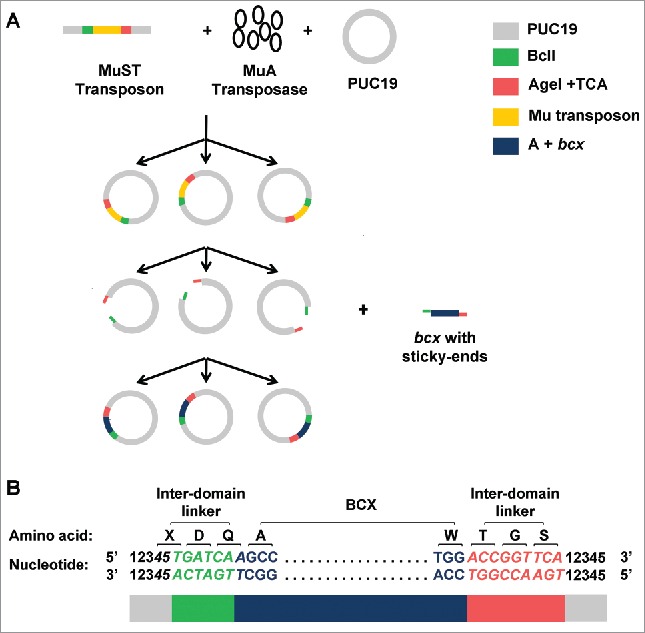Figure 1.

(A) A schematic of random protein domain insertion is illustrated with bcx and PUC19 containing lacZα as model guest and host genes, respectively. Random transposition of the MuST transposon into the host plasmid PUC19 is mediated by MuA transposase. After random transposition, the MuST transposon is removed by double digestion using BclI and AgeI restriction enzymes. The double-digested PUC19 is then sticky-end ligated with a guest DNA. Additional 5′ adenine is contained upstream of the bcx for in-frame connection between BCX and the desired inter-domain linker residues. (B) A sequence schematic of bcx randomly inserted into PUC19. The BclI (TGATCA) site is shown in green. The AgeI (ACCGGT) + TCA site is shown in red. Numbers (i.e., 12345) represent nucleotide sequences derived from the host DNA. Nucleotide sequences encoding linkers (i.e., 45TGATCAA and ACCGGTTCA) are shown in italic. The first and last codons of BCX (i.e., GCC and TGG, respectively) are shown in plain font. X represents one of 15 amino acids (i.e., Ala, Arg, Asn, Asp, Cys, Gly, His, Ile, Leu, Phe, Pro, Ser (twice), Thr, Tyr, and Val) encoded by a codon containing 3′ thymine. Colored blocks shown at the bottom indicate the following: gray for nucleotide sequences derived from PUC19, green for the BclI site, dark blue for additional 5′ adenine + bcx, and red for the AgeI + TCA site. (Reproduced with permission from Fig 1 in Shah V. (2013), Random domain insertion using an engineered transposon. Anal Biochem., 432, 97–102).
